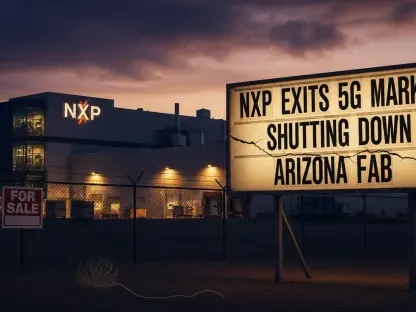Lead
BT is laying fiber at a rate rarely seen in Europe, yet the bigger question looms over the trench line: when does “build like fury” become “bank the cash” and how long will investors wait for proof. Openreach’s fiber take-up has hit 38%—well above the 30% mark analysts cite as the economic bar—while BT’s broadband base has shrunk by 1.8 million lines in three years, a paradox that frames the entire story. The company is racing to complete a 25 million-premise rollout by 2026 even as it trims headcount and signals a post-build cash inflection, with the outcome hinging on policy, rural economics, and whether convergence can anchor customer loyalty.
Why It Matters
The United Kingdom’s fixed-line market is mature, slow-growing, and unforgiving on price, leaving little room for top-line expansion. BT’s annual sales are down roughly £3.7 billion since 2016, a stark reminder that growth through coverage alone is not a cure-all. In this context, execution quality—where to build, how fast to migrate, and how ruthlessly to simplify costs—becomes the main lever for shareholder returns.
The competitive landscape is also shifting. After a rush of capital, alternative networks have slowed construction by about 40% year over year, and average take-up around 16.5% sits well below sustainability norms. That eases overbuild pressure on Openreach, but it does not undo the damage in towns where challengers arrived first. For policymakers, the stakes are structural: wholesale pricing, rural subsidy frameworks, and universal service ambitions will determine whether Britain’s fiber build goes beyond the 25 million mark—or settles at a pragmatic plateau.
Fiber Build, Falling Lines
Openreach’s coverage jump—20.3 million premises passed, up from 11.9 million two years ago—shows operational muscle. Take-up across that footprint at 38% suggests product-market fit, brand reach, and wholesale partnerships are working. In relative terms, this performance outpaces many altnets that remain in the mid-teens, often wrestling with higher cost of capital and smaller marketing budgets.
Yet line losses tell a harsher story. More than 1.8 million broadband connections disappeared over three years, including 861,000 in the past 12 months. Losses clustered most heavily in altnet build zones where Openreach still relied on copper. That forced a tactical pivot: accelerate fiber specifically in contested postcodes to stem defections, then price aggressively enough to win back households and stabilize churn. The approach trades short-term margin for longer-term network utilization, betting that scale will ultimately finance itself.
Capex Now, Cash Later
The rollout cadence has accelerated. BT added about 4 million premises last fiscal year and is targeting 5 million more this year. That tempo pushed capital expenditure up 8% to roughly £2.4 billion in the most recent half, driving normalized free cash flow down 43% to £408 million. Management’s message was consistent: front-load the investment to finish the footprint by 2026, then taper spending and let cash flow rise as migrations gather pace.
The near-term financials reflect this squeeze. Revenue fell 3% to £9.8 billion, and profit before tax declined 11% to £862 million. Even so, BT raised the dividend to 2.45 pence and the stock rose nearly 5% on the day; shares have climbed about 70% under CEO Allison Kirkby’s tenure, a sign that markets value milestones and credible timelines. The implicit pact is simple: finish the job, stabilize lines, and translate fiber take-up into free cash flow that can service debt, fund digital upgrades, and underpin returns.
The Human Factor
Productivity is the other half of the equation. Headcount stood at 111,113 employees at September, down about 12,300 in two years, as the company wound down peak-build activity and doubled down on automation. The target by decade-end—75,000 to 90,000 roles including contractors—signals a leaner operating model built on digital provisioning, AI-led assurance, and the retirement of legacy platforms.
Those changes are not purely discretionary. Wage inflation, national insurance shifts, and aging infrastructure push operating costs higher unless countered by structural simplification. The planned PSTN shutdowns and consolidation of IT stacks release opex savings that strengthen the math of a fiber-first business. Investors have generally applauded this discipline, even as internal pressures rise with rapid workforce change.
Regulation At The Edge
What happens after 25 million premises remains the policy pivot. BT has said it will not commit beyond that line without predictable wholesale returns and clear pricing glidepaths. The next 5 million are the hardest: higher-cost build, slower payback, and greater reliance on subsidies or tailored economics to justify investment.
Wholesale rules will also shape competition. If pricing discourages investment or undercuts the incumbent’s return, the risk is a patchwork build where rural edges fall behind. Conversely, a stable framework could unlock additional coverage, soften political pressure, and encourage consolidation among smaller players. For now, BT is deliberately cautious, signaling that capital will follow clarity.
Rural Reality And Satellites
Not every lane justifies fiber trenching. For hard-to-reach premises, BT’s partnership with Starlink offers a safety valve—satellite as a near-immediate service where fiber ROI is weak or funding is absent. The model does not displace fiber’s role as the backbone, but it creates a mixed-technology path that can meet universal service targets without unsustainable capex.
This pragmatic stance aligns with international practice. Many operators blend fiber, fixed wireless, and satellite to cover the last percentage points of population. The craft is in segmentation: where subsidies are available, push fiber; where costs exceed thresholds, deploy satellite; and across the middle, leverage shared builds or wholesale commitments to make the economics work.
Mobile As The Glue
The mobile arm supplies another lever for retention. With 5G standalone now covering about 66% of the population and a trajectory toward near-universal coverage by decade-end, BT can lead on network quality and latency-sensitive services. That, in turn, strengthens bundling power—fixed-plus-mobile packages that defend against churn and support premium pricing.
Convergence remains a proven tactic in European telecom. Customers on both fixed and mobile tend to stay longer and spend more, provided service is reliable and switching costs are visible. For BT, this playbook connects the fiber thesis with the mobile edge, turning infrastructure scale into a commercial moat.
What Analysts And Executives Say
Allison Kirkby framed the competitive reset succinctly: altnet build has slowed by about 40% year over year, easing near-term overbuild risk while BT focuses on contested zones. “The priority is finishing the footprint at speed and converting copper to fiber,” she has emphasized in recent briefings. The subtext is clear—scale first, harvest next.
Analysts, meanwhile, keep returning to the viability threshold. “Thirty percent plus take-up is where the economics start to wash their face,” one London-based analyst said, noting Openreach’s 38% footprint take-up. Field evidence supports the point: in towns where altnets launched first, Openreach narrowed churn only once its own FTTP went live and pricing sharpened. A common investor framing has emerged around the cash arc: complete the 25 million build by 2026, lift free cash flow toward £2 billion by fiscal 2027, and approach £3 billion by 2030—dependent on stabilizing lines and a disciplined capex taper.
The Playbook From Here
Execution now turns on selective acceleration and sharper incentives. Prioritize the overlap areas where altnets sell today, expand fiber access quickly, and price for take-up rather than short-term ARPU optics. Simplify migrations, bundle intelligently, and ensure wholesale partners commit volume in exchange for stable tariffs and assured activation timelines.
Cost work must endure beyond the build peak. Automate provisioning, assurance, and collections to offset wage pressures; set immovable deadlines for PSTN and old IT retirements; and codify decision gates for the post-25 million phase. On rural, segment rigorously: fiber where subsidized or economic, satellite where it is not. The operational dashboard should spotlight net lines in overlap zones after FTTP launch, take-up by cohort age, build cost per premises passed, and copper-to-fiber migration velocity.
Conclusion
The path ahead favored speed, discipline, and proof. Openreach’s surge in coverage and a 38% take-up cleared the economic bar, but momentum only translated into durable cash once customer losses slowed and migration rates rose. Investors had signaled patience as long as milestones held: finish 25 million by 2026, taper capex, lock in free cash flow, and keep the dividend credible. Policy clarity would have decided whether another 5 million premises made sense; absent that, the Starlink tie-up delivered coverage without straining returns. The most actionable steps were plain: double down in contested zones, push automated operations to bank opex savings, enforce legacy shutdowns on fixed timelines, and use mobile leadership to fortify bundles. If that playbook stayed intact, the fiber frenzy turned into a cash machine; if not, the next chapter belonged to consolidation, shared builds, and a leaner model built as much on restraint as on reach.









